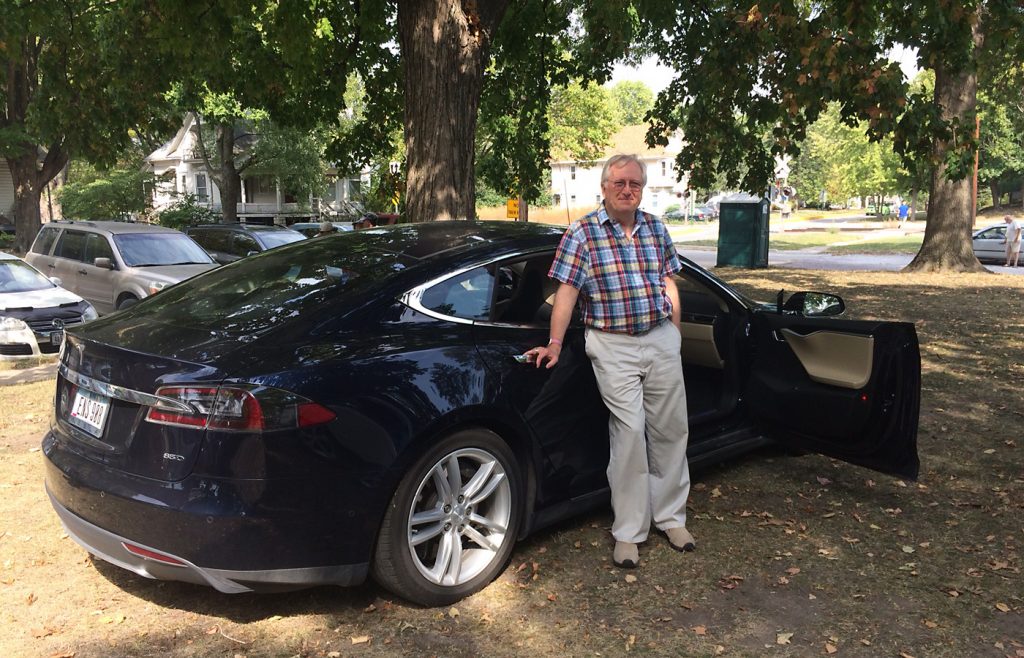
I’m looking at a photo of a parade on 5th Ave. in New York City from 1900. There are approximately 50 horse-drawn carriages—and one automobile.
And now I’m looking at a photo of the same street taken in 1913. I count about 40 cars—and one horse-drawn carriage.
What caused this change? For one thing, in the era of horses the streets were filled with manure. A typical horse produces between 15 and 35 pounds per day. In the year 1900, there were about 100,000 horses in NYC, which amounts to 2.5 million pounds per day. And it smelled. Bad.
Plus, all of these horses needed to be housed in stables, which began to take up increasingly large amounts of land. And it took up even more land to produce hay for the horses. Of course, to get that hay to the horses in the city, it was necessary to use horse-drawn vehicles.
In the end, transportation by horse just wasn’t sustainable.
Enter the automobile. By around 1908, the number of cars in New York City surpassed the number of horses. And by 1920, the transition was nearly complete.

What’s the moral of this story? Many people think we’re seeing the same sort of transition today. Gas-powered cars will go the way of the horse-drawn carriage, and electric will take over. Some call it “carmageddon.”
The arguments are compelling. The drivetrain on a gas car has some 2,000 moving parts—compared to 20 on an electric car. Which car do you think is less prone to having a breakdown? It’s estimated that an electric car will have an average lifespan of 500,000 miles.
Just that fact alone will be transformative. If an electric car lasts over three times longer than a conventional auto, the auto industry won’t need to make as many of them. Since there will be less need for parts, that industry, too, will change.
But obviously, the larger transformation will be the fossil fuel industry. Thanks to fracking, fossil fuel is relatively cheap these days, but it’s especially bad for the environment. In the long run, it will be necessary to switch to more sustainable sources of energy. Many experts have predicted we’ll reach “peak oil” before the year 2020—which is when the maximum rate of petroleum extraction will be reached. After that, the oil reserves will begin to decline and extraction will become increasingly expensive.
Ultimately, like horse-drawn carriages, the use of gas-powered cars just isn’t sustainable.
So if electric vehicles are a panacea, why aren’t we there yet? There are at least a couple issues with electric cars.
One is that much of our electricity is being produced using . . . fossil fuels. That’s gradually changing, though, with Iowa’s Alliant Energy getting 15 percent of their electricity via wind power. Here in Fairfield, we have two electric car-charging stations on the MUM campus that draw their power from solar panels and a wind turbine. Campus residents with plug-in electric vehicles are able to drive their cars locally without any reliance on fossil fuels.
Additional issues are the limited range of an all-electric car and the length of time it takes to recharge the battery. You have to either stick to driving locally or spend a lot of time planning ahead.

But the range of electric cars is increasing quickly. Cars with a model year of 2011 had a median range of 63 miles and a maximum range for the best models of 94 miles. With the 2017 model, the median range had increased 56 percent to 114 miles, with a maximum range of top models being 335. And the range has increased since then. Two models that Tesla announced late last year were said to have a range of 600 miles. This suggests that range won’t be much of an issue in the not-too-distant future.
Charging your vehicle at home can take up to 12 hours, while a 22kW rapid charger can now fully charge a car in 30 minutes.
I think the trends are clear: nonsustainable, fossil-fuel powered cars going the way of the horse and carriage, with electric cars completely replacing them.
When will that be? China, the UK, and France have already set timetables for the elimination of vehicles using gas and diesel over the next 20 years. India plans to switch to all electric in 12 years.
Auto manufacturers see the trend and are changing their lineups accordingly. Volvo is planning to have fully electric vehicles compose half of their sales by 2025. GM plans to introduce 20 new fully electric models by 2023, and Ford is planning 13 new fully electric and hybrid models by 2023. Mercedes-Benz plans to electrify their “entire portfolio,” offering 50 electric and hybrid models by 2022.
The smell of engine exhaust will soon go the way of the smell of manure.
See column archives at jimkarpen.com.
